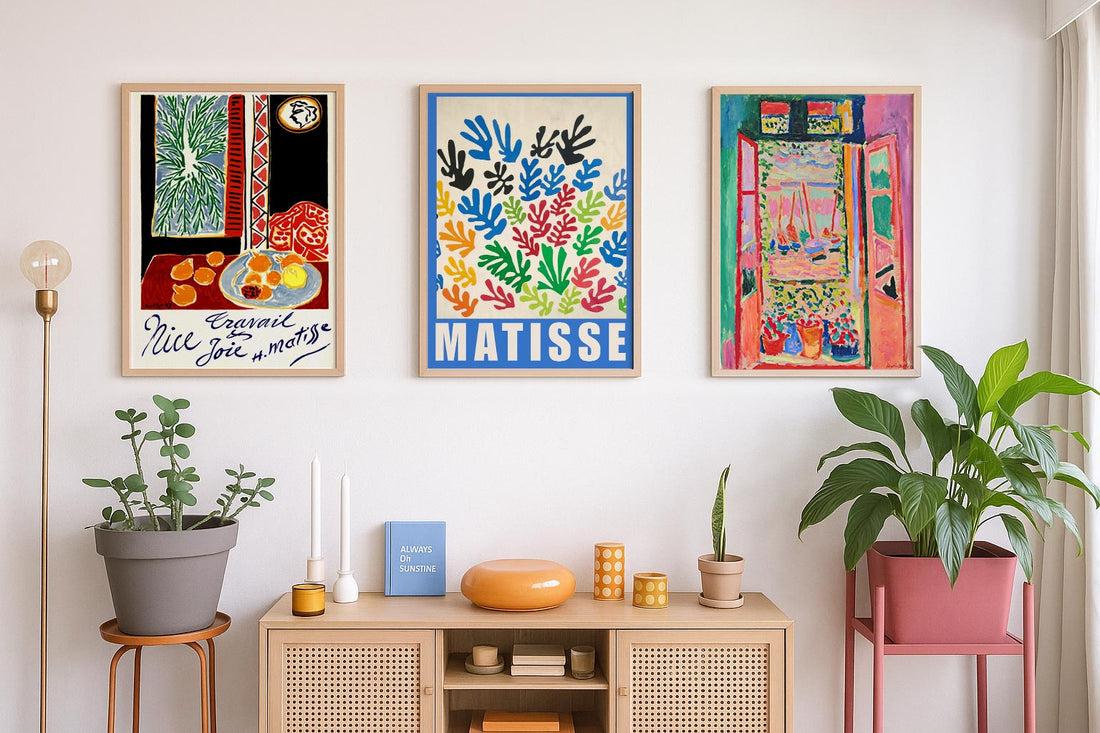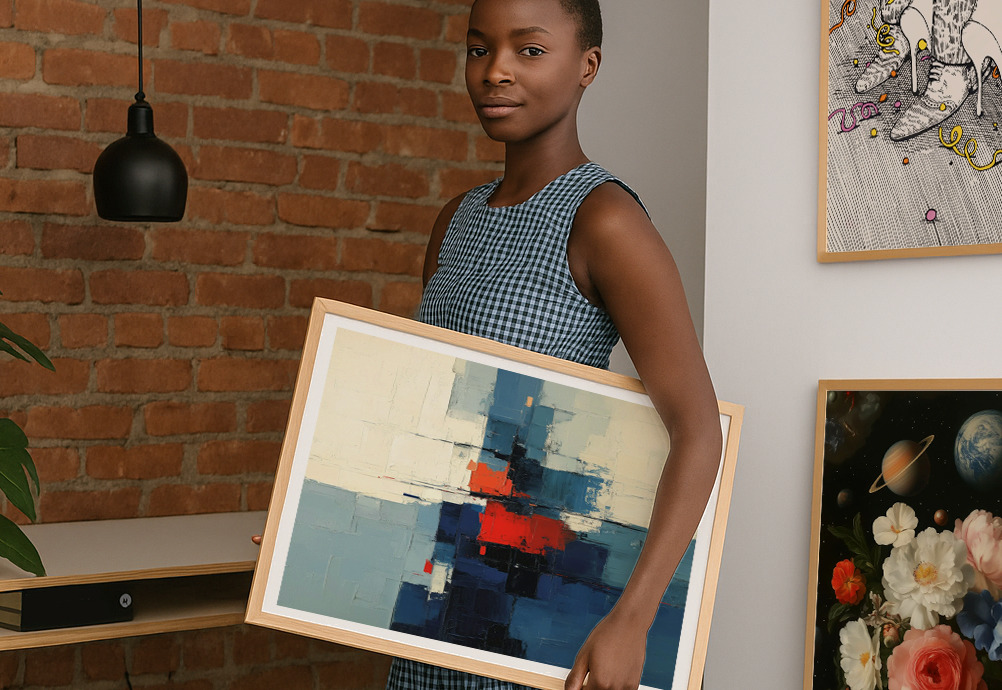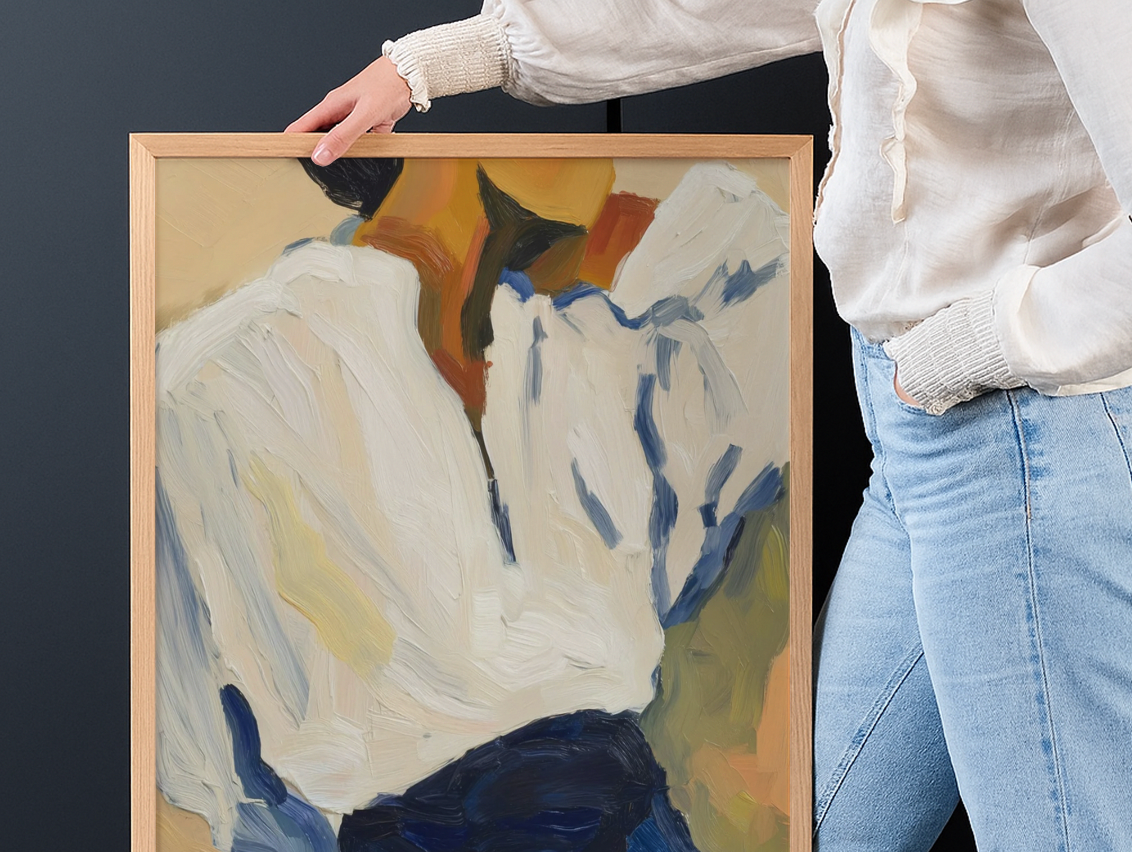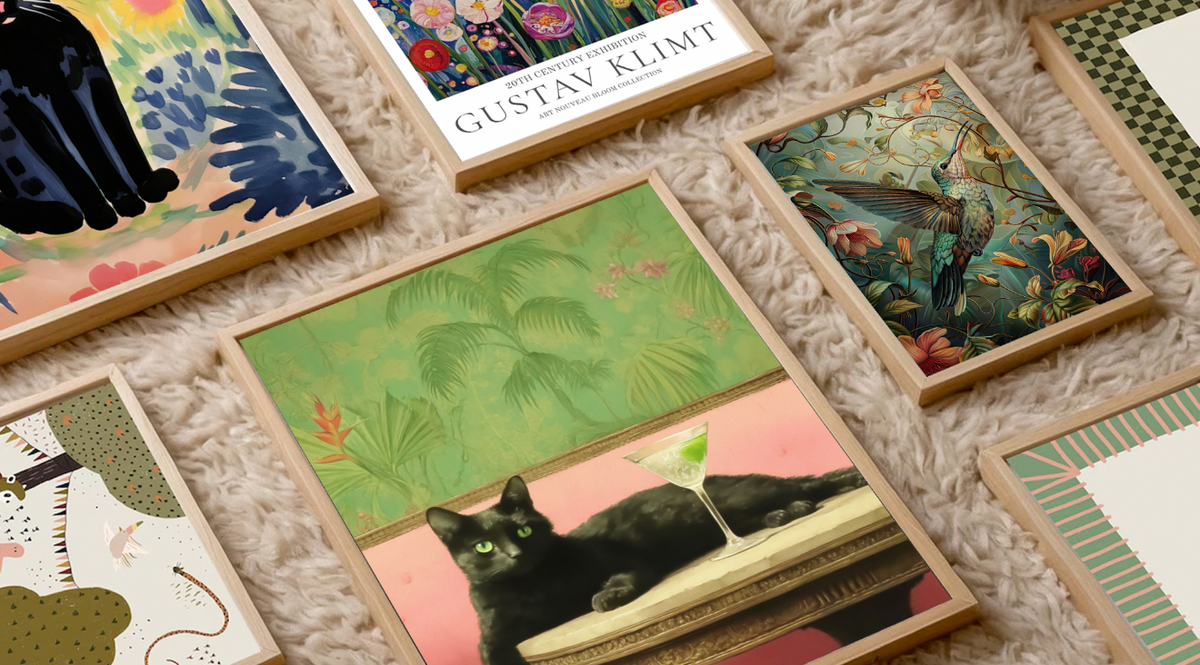Mistakes to Avoid When Buying Wall Art
Our guide to common pitfalls people make when choosing art - and how to avoid them without second-guessing every decision.

Buying wall art shouldn't feel this hard. But somehow it does. You stare at blank walls for months, scroll through hundreds of options online, and still feel like you might pick the wrong thing.
Here's what I've learned after years of helping people choose art. Most of us make the same mistakes. And most of them are easy to fix once you know what to look for.
The good news? Your taste matters more than any rule. And the pieces that feel a little bold are usually the ones you'll love longest.
Going Too Small Every Time
This is the big one. Almost everyone picks art that's too small for their space. You think you're being safe, but you end up with something that disappears on the wall.
Here's why it happens. When you're looking at art online or in a store, everything looks bigger than it actually is. That piece that seemed perfect suddenly looks tiny when you get it home.
Most people go too small. You won't regret going bigger. If you're torn between two sizes, pick the larger one. Your walls can handle more than you think they can.
Only Buying Art That Matches
I get it. You want everything to look coordinated. But when you only choose art that matches your existing colors perfectly, your room ends up looking flat.
The best art adds something unexpected to a space. It might pick up one color from your pillows but introduce three new ones. It might be warmer than everything else in the room, or cooler, or brighter.
Think of art as the thing that brings personality to all those neutral pieces you already have. Let it stand out a little. That's what makes a room interesting.
Choosing Quantity Over Impact
You know that gallery wall look everyone's doing? It's harder than it looks. And often, one larger piece makes a bigger impact than six small ones clustered together.
Gallery walls work when they're done well. But they take planning, and they're expensive when you add up all those frames. Plus, if you don't love every single piece, the whole thing feels off.
Start with one piece that makes you happy. You can always add more later. But that one strong piece will do more for your room than a bunch of smaller ones you're not sure about.
Playing It Too Safe
This one hurts to watch. You find something you love, something that makes you stop scrolling. But then you talk yourself out of it because it feels too bold or too different from what you usually buy.
Safe art is forgettable art. If a piece doesn't make you feel anything, it's not going to make your room feel like anything either.
The art that scares you a little bit is usually the art worth buying. Not scary in a bad way, but scary because it's more interesting than what you'd normally choose.
Ignoring Your Gut
You'll know when something's right. There's a feeling you get when you see a piece that works for you. Don't overthink it.
But here's what happens. You find something you love, then you start researching. You read reviews, ask friends, look up the artist. You think about whether it's sophisticated enough or trendy enough or whatever enough.
By the time you're done thinking, you've talked yourself out of the thing you actually wanted. Trust that first feeling. It's usually right.
Trying to Complete Everything at Once
You don't need to fill every wall in your house this weekend. Good rooms happen slowly, over time, as you find pieces you actually love.
But there's pressure to get everything done quickly. You see those perfect Instagram rooms and think you need your place to look like that immediately. So you rush and buy a bunch of stuff that's fine but not great.
Give yourself time to find the right pieces. Your walls can stay empty a little longer. It's better than filling them with art you don't really love.
Following Rules Instead of Feelings
There are a lot of rules about art placement. Hang it 57 inches from the floor. Make sure it's two-thirds the width of your furniture. Never put small pieces on big walls.
Some of these rules are helpful starting points. But they're not laws. If something looks good to you, it probably is good.
Your room doesn't need to look like it came from a design magazine. It needs to look like you actually live there and chose things because you love them.
Buying Everything Online Without Seeing It
Online shopping for art is convenient, but it's also risky. Colors look different on every screen. Sizes are hard to judge. That texture you thought you saw might not actually be there.
If you're buying online, look for places with good return policies. And pay attention to the details in product descriptions. How big is it really? What kind of paper is it printed on? How are the colors described?
Better yet, if you can see pieces in person first, do that. Even if you end up buying online later, you'll have a better sense of what you're getting.
Overthinking the Investment
Art doesn't have to be expensive to be good. And it doesn't have to be cheap to be affordable. Figure out what you can spend comfortably and work within that.
But don't let budget anxiety stop you from buying anything at all. Prints are a great way to get beautiful art without spending a fortune. And if your taste changes later, you can always swap them out.
The most expensive mistake is not buying anything because you're waiting for the perfect piece at the perfect price. Your walls would rather have something you love now than nothing while you wait for someday.
Not Thinking About Lighting
Art looks different in different light. That piece that looked perfect in the store might look totally wrong in your dim living room. Or amazing in morning light but weird at night.
Think about when you'll be looking at your art most. If it's going in a bedroom, how does it look in soft lamplight? If it's in a kitchen, how does it handle bright overhead lights?
Most rooms have mixed lighting throughout the day. But if you know your space is particularly dark or bright, factor that in when you're choosing.
Second-Guessing After You Buy
You got the piece. You hung it up. And now you're wondering if you made a mistake. This is normal. Almost everyone goes through this.
Give it a week before you decide you hate it. Sometimes it takes time to get used to something new on your walls. What feels wrong on day one might feel perfect on day seven.
And if it really doesn't work? Most places have return policies. It's not the end of the world.
What Actually Matters
Here's the thing about all these mistakes. Most of them are fixable. You can exchange pieces that don't work. You can move art to different walls. You can add more pieces or take some away.
The only real mistake is not trusting yourself. You know what you like. You know what makes you feel good when you look at it. Start there.
Your room doesn't need to impress anyone else. It needs to make you happy to be in it. And the art that does that is never a mistake.
Ready to find pieces you'll actually love? Browse our collection of bold, beautiful prints that won't leave you second-guessing your choice.
More from The Frame
More stories, insights, and behind-the-scenes looks at the art that transforms your space.
Top Wall Art Trends for 2025: What's In, What's...
Trends aren't rules to follow blindly. They're signals about where our collective taste is heading, what's capturing our imagination, and what feels fresh right now. The wall art trending in...
Art for Gifting: How to Choose a Print for Some...
Giving someone art is either incredibly thoughtful or slightly terrifying. There's no middle ground. On one hand, you're giving them something beautiful that will live in their home for years....
9 Art Prints That Instantly Elevate Any Living ...
You know that feeling when you walk into a beautifully styled living room and everything just feels right? It's not the expensive sofa or the perfect rug. It's usually the...


